Rule Change Proposal: 24-13 Rules of Conduct – Sections 5 & 18
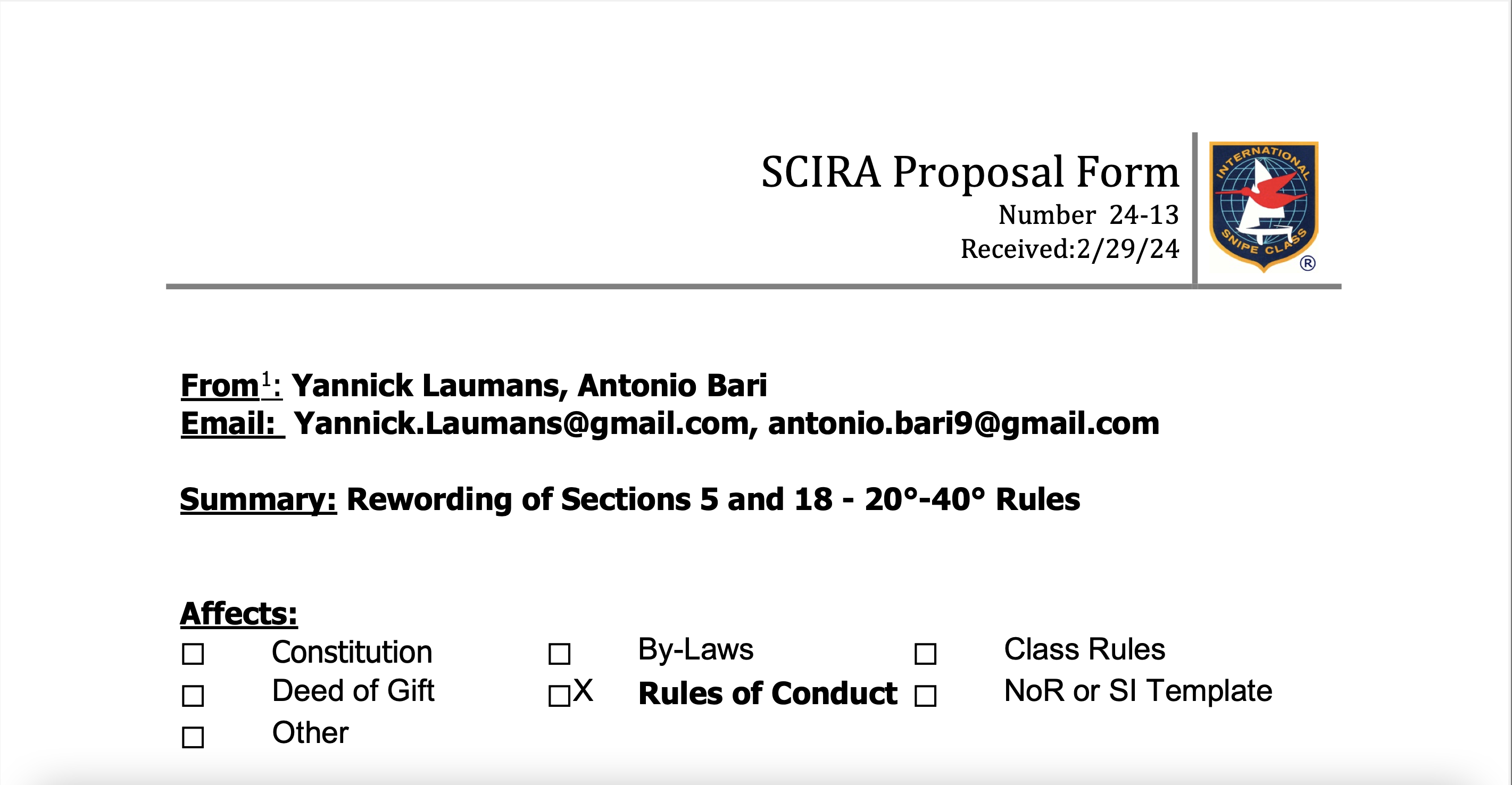
According to the Decision Making Process,
- Rules changes can be submitted up to 1st March.
- All proposals will be published on the website.
- The period from March to June will be used for public discussion and also for the Rules Committee recommendations.
- The Board will vote all submission on July.
- The approved changes will be sent to World Sailing (August) for final approval (November).
Discussion Forum here on SnipeToday (you can leave comments)
Comments for this post are closed

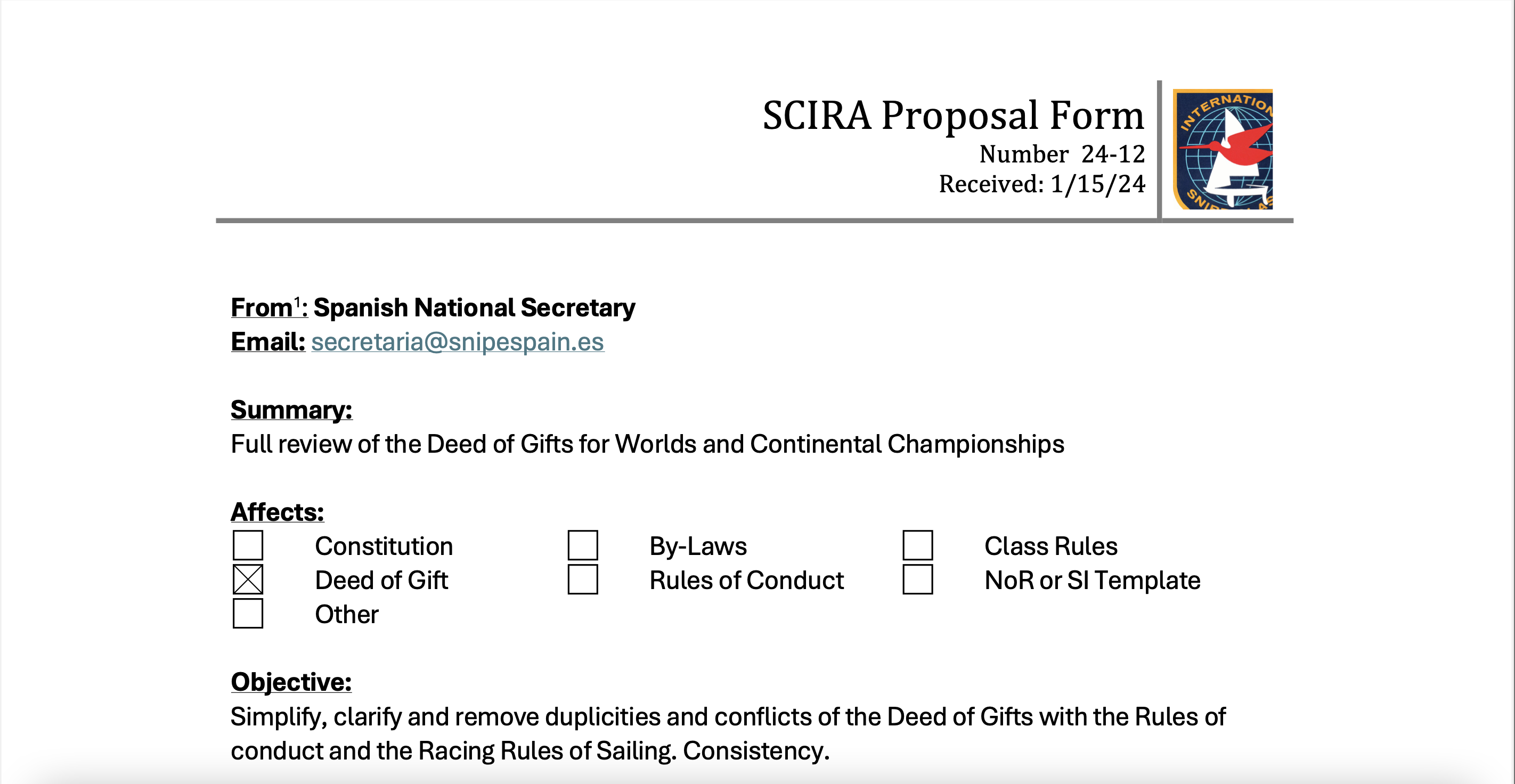
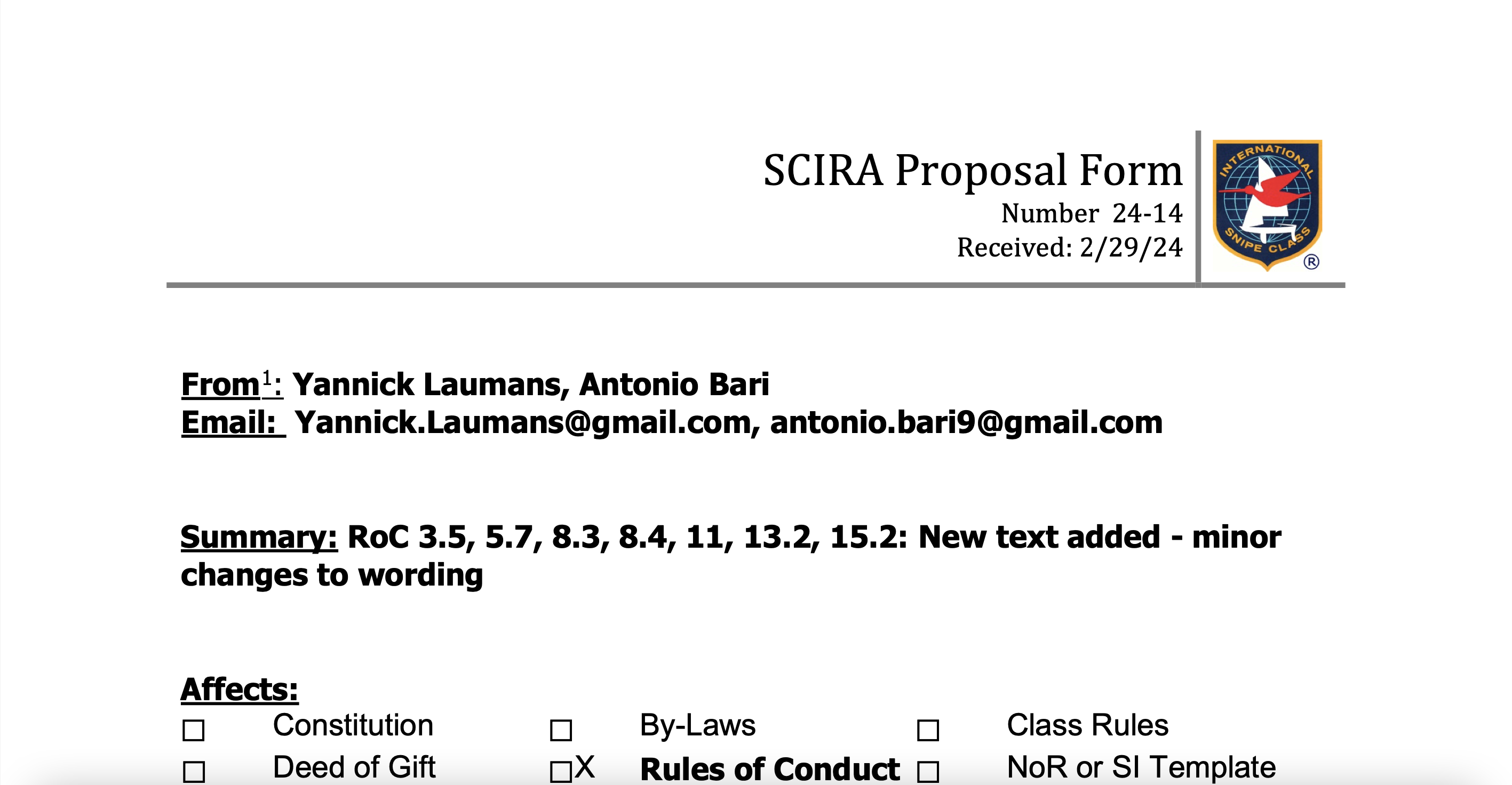
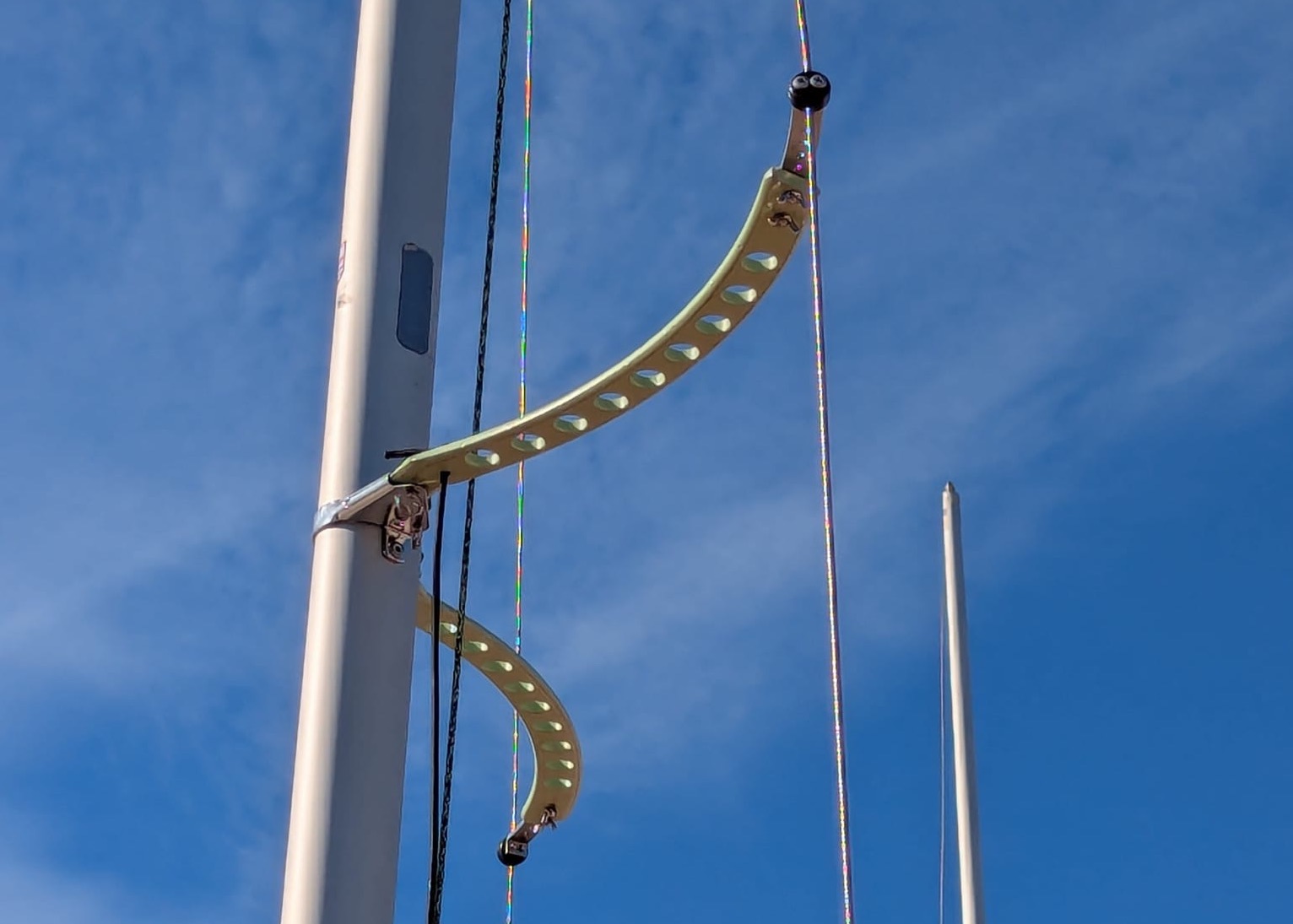
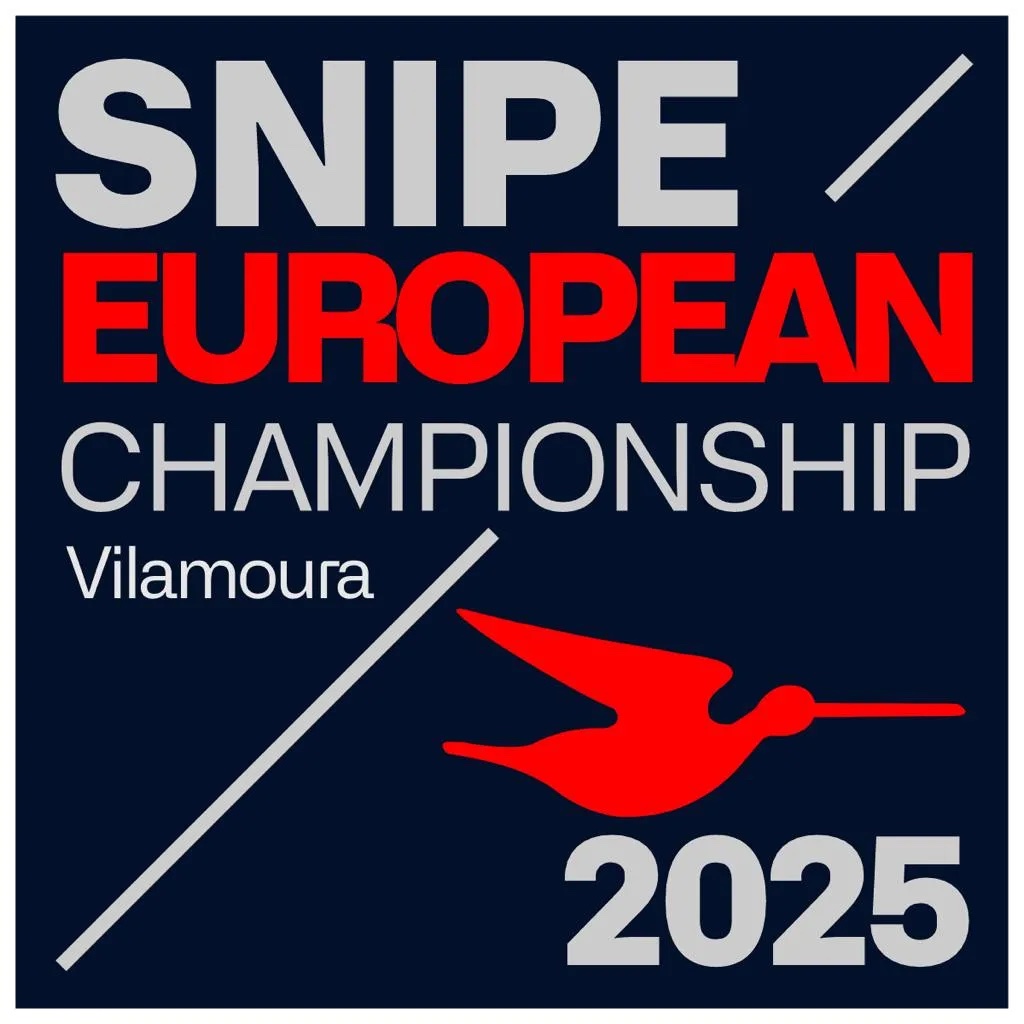
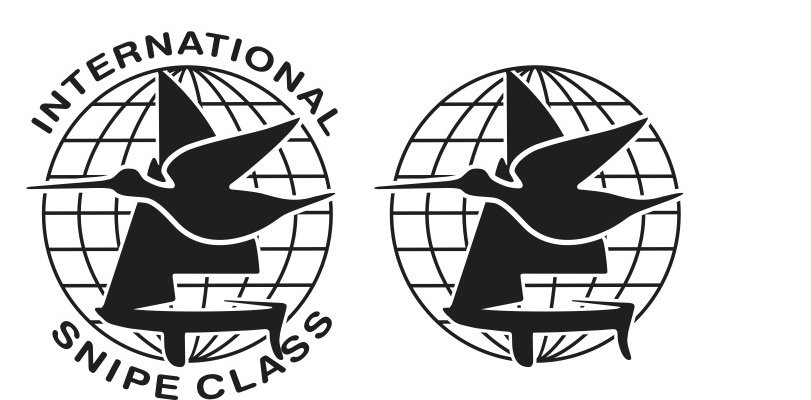
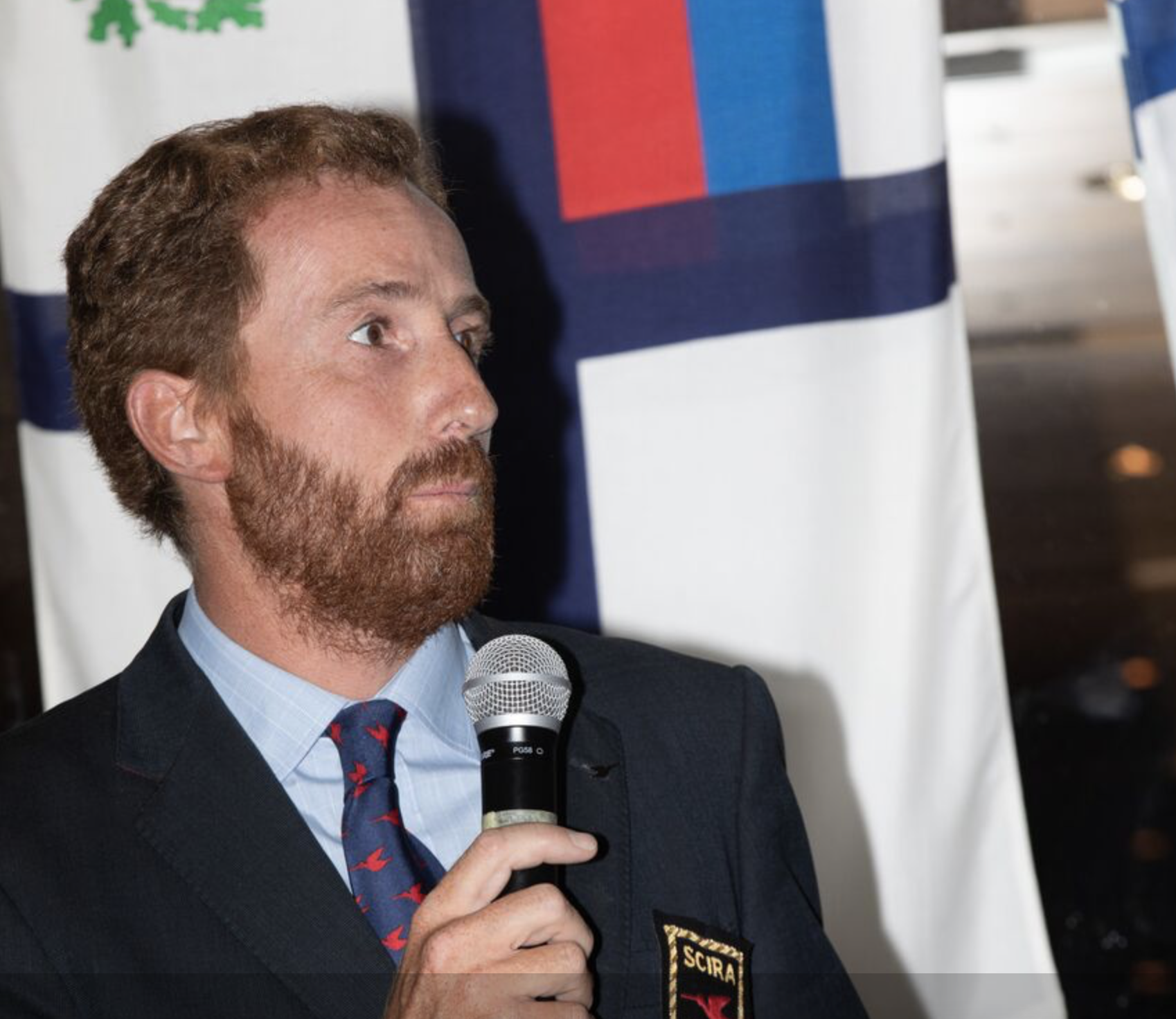
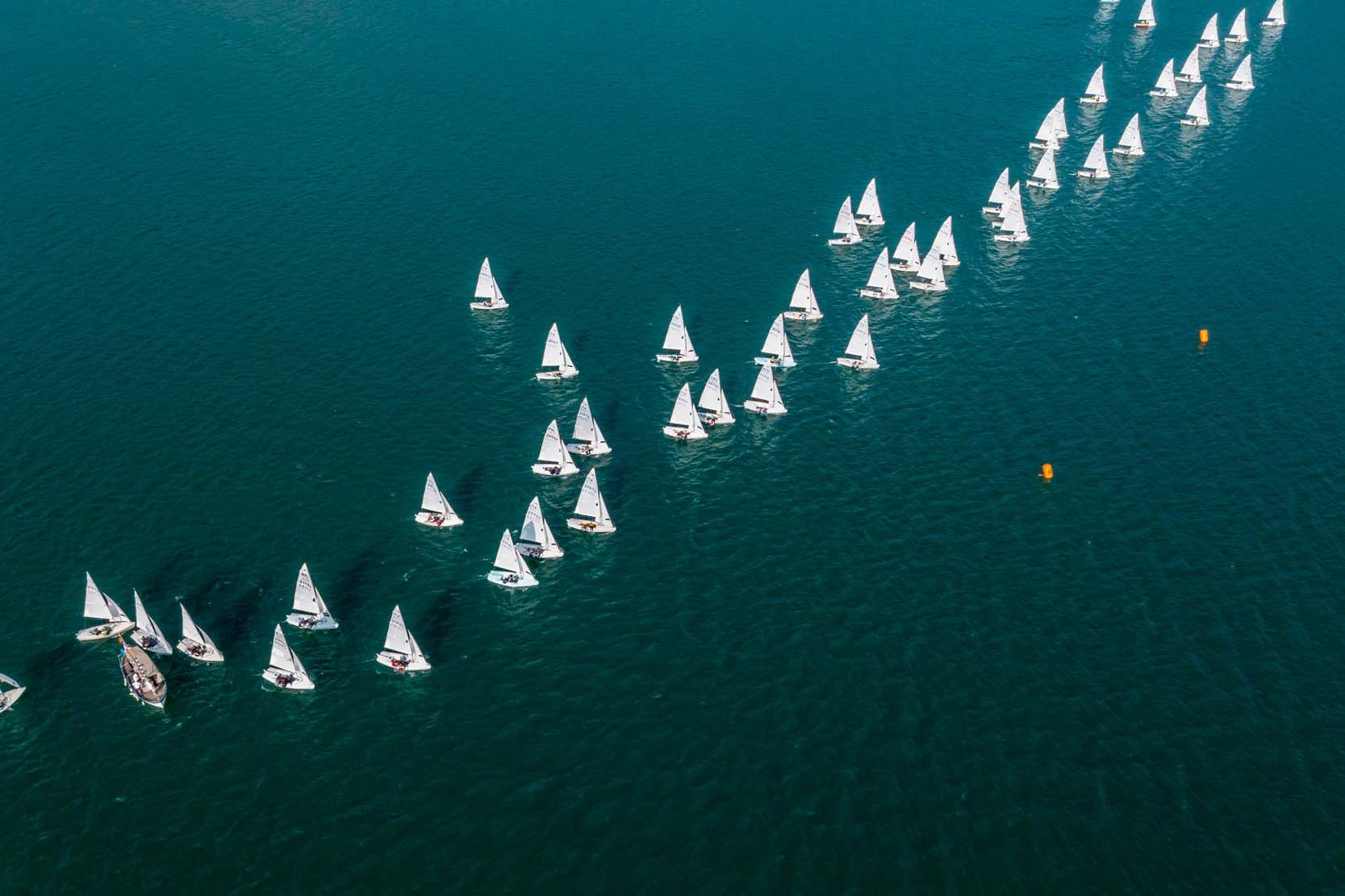
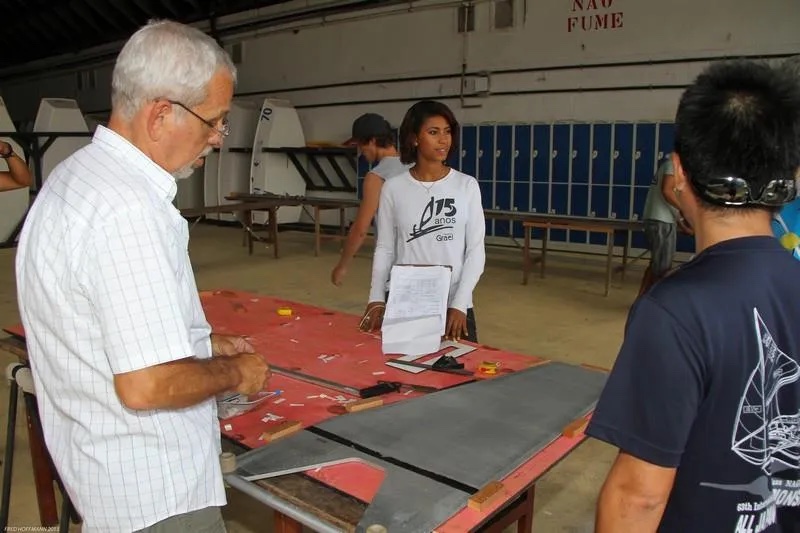
1 comment
Pietro Fantoni
This is a super important topic. Thanks for bringing it up. It's a situation that happens often and always creates a lot of discussion. In some cases in the past we have been favored and in some cases disadvantaged by the Race Committee's decision to abandon the race or not to abandon the race. And if we were not satisfied we can ask (with a request for redress) an independent protest committee (for our main championship it is a panel composed by International Judges appointed by World Sailing) to decide whether the Race Committee's (which is usually composed by national Race officials) decision was right or wrong. Everyone can make mistakes and that's what the independent Jury is for.
Moving on to the merits of the proposal, first of all a terminological clarification. If we want to change the word "sustained" with "permanent" wind shift, I would rather suggest this different wording: "persistent wind shift". In the technical literature (see for example Stuart Walker "Advanced Racing Tactics") "Persistent Shift" is defined: “A shift in wind direction that is not followed by a return to the original direction prior to the completion of the leg”.
This distinguishes it from "Oscillating Shift”: “A wind shift that will be followed by a shift back to the original direction prior to the completion of the leg”.
The proposal (reading the reasons) wants to remove sailors' “power to request redress, although the competitors don't have any instrument to support the request”. This statement is quite strong and, in my humble opinion, wrong: 1) the power to request the redress does not mean that the redress is granted by an independent Jury - for international regattas International Jury - which evaluates the evidence brought by the competitors and also evaluates what it may have verified itself on the race course, if they were on the water); 2) saying that the "competitors don't have any instrument to support the request" is not true, because the competitors have the compass and observe it throughout the race, while they sail the course.
It seems to me that there is a sort of prejudice: all requests for redress are specious and the evidences are artfully invented to obtain a personal advantage. Again, there is an independent (sometimes International) Jury that evaluates the facts and decides whether the decision to abandon or not abandon was correct or not.
The current RoC 5.5 and 5.6 are a peculiarity of the Snipe Class that make abandoning the race mandatory.
Adding the reference to RRS 32.1 means making the action of the Race Committee only optional (RRS 32.1 uses the word "may" abandon the race), in case of a persistent shift of 20 or 40 degrees.
If we want this, it would be sufficient to completely delete RoC 5.5 and 5.6. Without RoC 5.5 and 5.6, RRS 32.1 would apply.
But are we sure we want this? I personally don’t.
_______
Note Racing Rules of Sailing RRS 32.1 states:
32 SHORTENING OR ABANDONING AFTER THE START
32.1 After the starting signal, the race committee may shorten the course (display flag S with two sounds) or abandon the race (display flag N, N over H, or N over A, with three sounds),
(a) because of foul weather,
(b) because of insufficient wind making it unlikely that any boat
will finish within the race time limit,
(c) because a mark is missing or out of position, or
(d) for any other reason directly affecting the safety or fairness of the competition.
In addition, the race committee may shorten the course so that other scheduled races can be sailed, or abandon the race because of an error in the starting procedure. However, after one boat has started, sailed the course and finished within the race time limit, if any, the race committee shall not abandon the race without considering the consequences for all boats in the race or series.
Leave a reply
Your email address will not be published. Your comment will be revised by the site if needed.
Antonio Bari
This topic should be analysed from different points of view.
I agree that changing the wording with a commonly used term as “persistent wind shift” which is universally recognised allows anybody to understand, although this does not change the matter so much.
But, what’s a persistent shift? A shift on the whole course? On a part of the course? And if so, how large is that part of the course? Half? One third? Or less, or maybe more...
All sailors have a compass onboard and can see and record any wind direction change, but sailors have a limited vision of the race course and can monitor a small race course area. The RC has a complete vision of the race course and can check the wind direction in several places (the start, the marks and, if necessary, anywhere on the race course) and at constant intervals. That’s why I believe that the RC only has the full possibility to evaluate the situation.
That said, the supposed higher level of competence of a Jury compared to the Race Officials due to the different appointment is not true (Jury members and Race Officials are not appointed as Pietro says), we must also consider that an “on the water” Jury usually oversees the competitors’ actions, not the race management, which is in charge of the RC, so that the judges don’t check the weather conditions so often. In case of a request of redress the Jury acts as in a normal hearing, without any personal evidence.
The RRS 32.1 doesn’t include a “persistent shift” among the causes to abandon a race, there’s only a generic “any other reason affecting … the competition”. Usually a race is abandoned if during the first leg the first boat rounds the mark without tacking. In my opinion, adding our specific “20-40 degrees” rule forces the RC to consider a possible abandonment in case that a “minor shift” (a persistent 20° shift forces the boats to tack at least once) happens.
Just to say, with the current rule no regatta could be sailed in the Northern Lake Garda, I mean Torbole or Riva, because there is always a persistent shift more than 20° from the mark bearing on a large side of the courses, which results in two different winds. This may be ground for redress by anybody if a “persistent shift” area is not established. And how can that area be evaluated? Are there on board instruments to do so? I think no.
That’s why I believe that the decision shall stay with the RRS 32.1, accordingly empowered, and with the RC who has a wider vision of the race course.
Leave a reply
Your email address will not be published. Your comment will be revised by the site if needed.